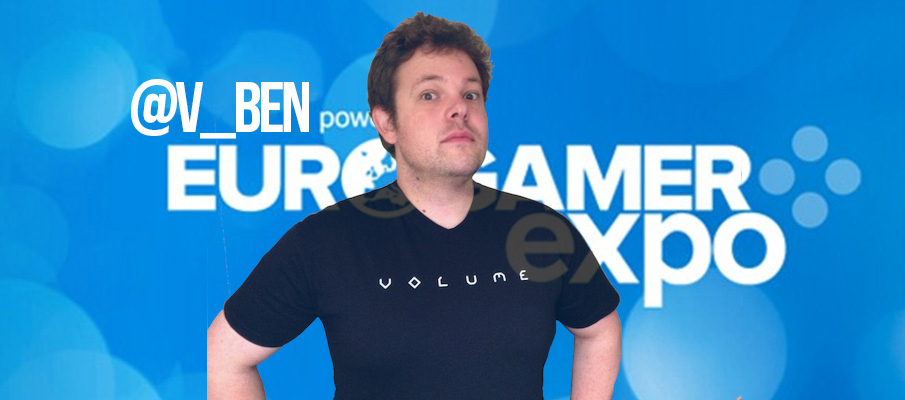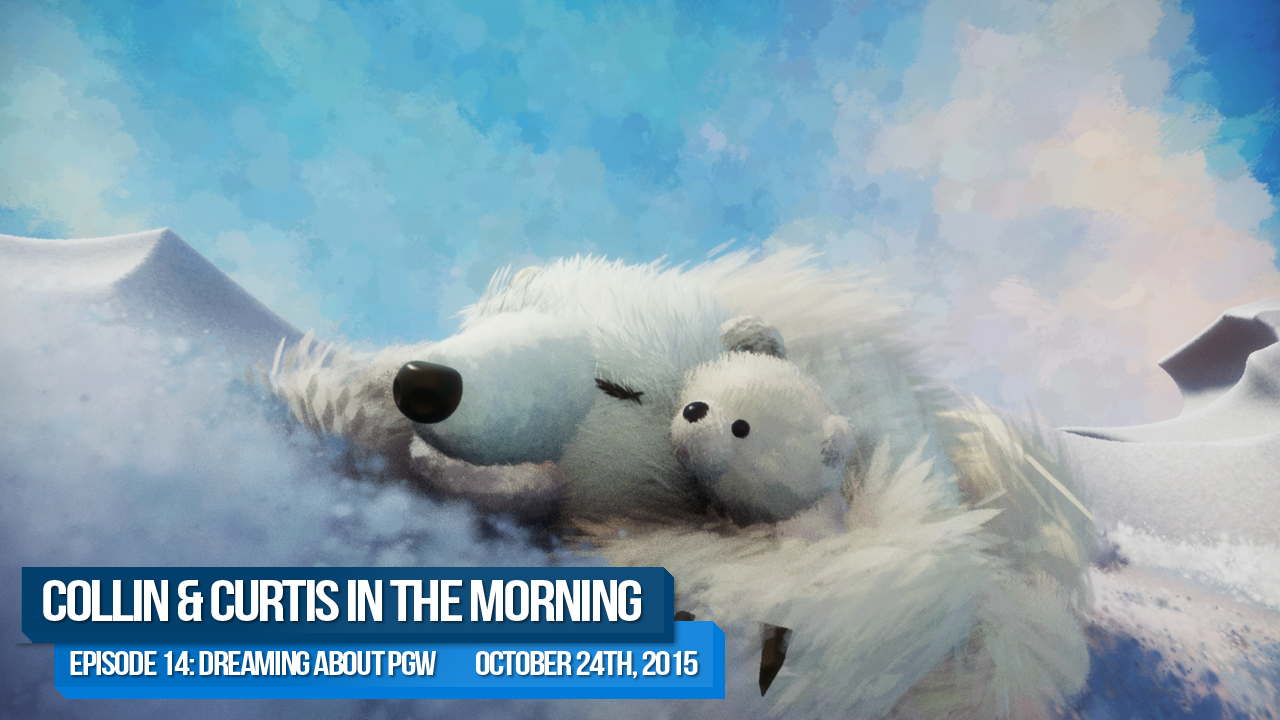
Eurogamer Interview with Mike Bithell on Volume
Posted by Ben on October 16th, 2013 | 0 Comments | Tags: Volume
Ok, so it’s more than a day late, but hopefully that doesn’t stop you from wanting to read more about Volume, the next Vita/PS4 game from Mike Bithell, creator of Thomas Was Alone. I interviewed Bithell at the 2013 Eurogamer Expo, many thanks to him for agreeing to it!
Ben: Ok, so obviously volume is a bit of shift from your previous game. How has it been to go from Thomas Was Alone to something a bit more complex, gameplay-wise?
Mike: It’s been fun. It’s been obviously a lot of work, learning how to run a team of around 8 guys at any one time, which is pretty exciting. And its gone pretty well! It seems so far to have come together into a really interesting game. Very nice to have all those toys to play with and be able to make a bunch of different things
Ben: What made you decide on a stealth game in particular?
Mike: Really, it was something I always wanted to do, it was always in the back of the head. I loved metal gear, obviously a bit influence. It was a game I loved a lot as a kid. Splinter Cell, Thief, Hitman, all of them. I absolutely love all of those games, and it was something I knew I wanted to return to and make my own take on those games. And that was a challenge, we’re taking a little bit of everything and putting it all together.
Ben: When you say it’s a challenge, were there any stealth pitfalls you were trying to avoid? The genre is sometimes known for frustration.
Mike: What I hate is… I don’t mind a harsh stealth game. That’s fine. That’s fun to do. I love dying because I made a stupid mistake, being respawned somewhere really quickly and getting back in to the action. That’s what I’m trying to do. What I don’t like is when it feels like the game is either cheating, or that there’s ambiguity there. I don’t like ‘are you in shadow, are you not in shadow’… I like binary. Seen or not seen. That’s really what we’re trying for with this game, to communicate with the player that this is the risk, this is what is going on, therefore you own your mistakes.
Ben: Player error is ok, but when it feels like it’s the game’s fault…
Mike: And then when a player makes an error, allow them to come back from it quickly. You don’t want to feel like you’ve been unduly punished.
Ben: I made several errors during the demo, was seen maybe more times than I would have liked to have been. But you’re able to get out of those messes you’ve created for yourself. If you move around quick enough. The idea of those little gadgets you pick up as well, did you have anything in mind in particular when choosing certain abilities? They’re all distraction tools.
Mike: There’s not going to be a shotgun.
Ben: Thank goodness.
Mike: There’s not going to be a silent, syringe kill. The idea is always to play with the rules of the world to get what you want. You can’t kill anyone, you can’t kill anyone permanently, you can’t stop the action. What you can do is quietly step in to a world, and adjust. Make it so there’s no AI’s over there…
Ben: So they won’t move back to a prescribed routine?
Mike: Oh they will. They absolutely will if you leave them alone, but my point is its about crowd control. So the gadgets, we’re going to expand and expand. One thing I really wanna do is I want to make a trip wire. You can walk round, you can aim at a wall, and a trip wire will be created where you drew. You can run off, an enemy can come through and be stunned by that. But, it’ll make a noise, meaning that any other enemies will come and look at that. That’s an idea I’ve been playing with for the last couple of days. That’s the great thing about stealth games, they’re very modular. You can try out cool, interesting ideas.
Ben: See how they all fit together. I don’t want to call them sleep darts, but the sleep weapon. It doesn’t take out the enemy entirely, but the variables, they make sense. The enemy is taken out of the equation for just long enough to allow you that crucial moment to slip past. There’s that feeling of getting by, by the skin of your teeth.
Mike: That’s the hope. I want you to feel very knowledgeable, but I also want you to be scared. I want you to be just getting through, like you say, by the skin of your teeth. That’s very intentional.
Ben: Cool! Let’s talk about the art design of the game. Thomas Was Alone was quite visually simple. Volume seems to echo that simplicity, but… I’m going to sound like the worst person in the world… simple, but with a lot of depth to it. How did you come to the decision of how it was going to look? Thomas was obviously praised for its visual design.
Mike: The thinking is, always, on the one hand, realistically, what can I make based around the time and money that I have. And also what does the game need. With Thomas, I had no money, no time, rectangles are very easy to do. Also, with the way that the stacking works in Thomas, anything other than a rectangle starts to break. If they’re people, beautiful humanoids, they fall off each other. Looks a bit weird. So, rectangles were cheap, but they worked for the gameplay. So we made those rectangles look very nice. Obviously with this one, the same question. How much money do I have? I have too much money, because Thomas did very well. So I have resources, so I can hire artists, animators, do loads of stuff. I can do whatever I want really. What does the game require? Well, in a stealth game, body language is important. Being able to see if an enemy is looking around with his gear, seeing if someone is crouching or standing up. You need to have arguably, not only bipedal characters, but bipedal, understandable physically characters. So I had to tick both those boxes.
In terms of the world, it’s kind of blocky and simplistic, because that’s cool. Step one. Two is because we’re doing all the player editing stuff, I wanted to make sure when the player is editing a level, it feels straightforward. I like the minecraft thing of just cubes. Straightforward, simple. It helps with the editing, with the understanding when you’re playing the game.
Ben: It makes everything easily identifiable. It’s a visual language
Mike: I hope so, I’m not against photorealism, but for this game it doesn’t suit what I’m doing. Hopefully it looks pretty as well!
Ben: Do you feel that there’s a danger with this being a Sophomore effort, that there’s a danger of an overreach?
Mike: Yeah, there’s a whole bunch of problems. It’s that difficult second album. Luckily I worked in the industry before this, so there’s that degree of awareness of my own abilities. That said, yes I could overreach, yes I could worry about what people think, but ultimately I just have to let it happen, I have to be realistic. This is a humble game, I know my limits and I’m hopeful! Got another year or so. I’m not confident, I’m never confident, but I’m happy we’re going to pull it off.
Ben: Quietly content.
Mike: Yes, quietly content!
An extremely big thank you goes out to Mike Bithell for participating in this interview. We look forward to learning more about Volume and any future projects Bithell endeavors to create. Do follow him on Twitter @mikeBithell and check out his official webpage for Volume.


















